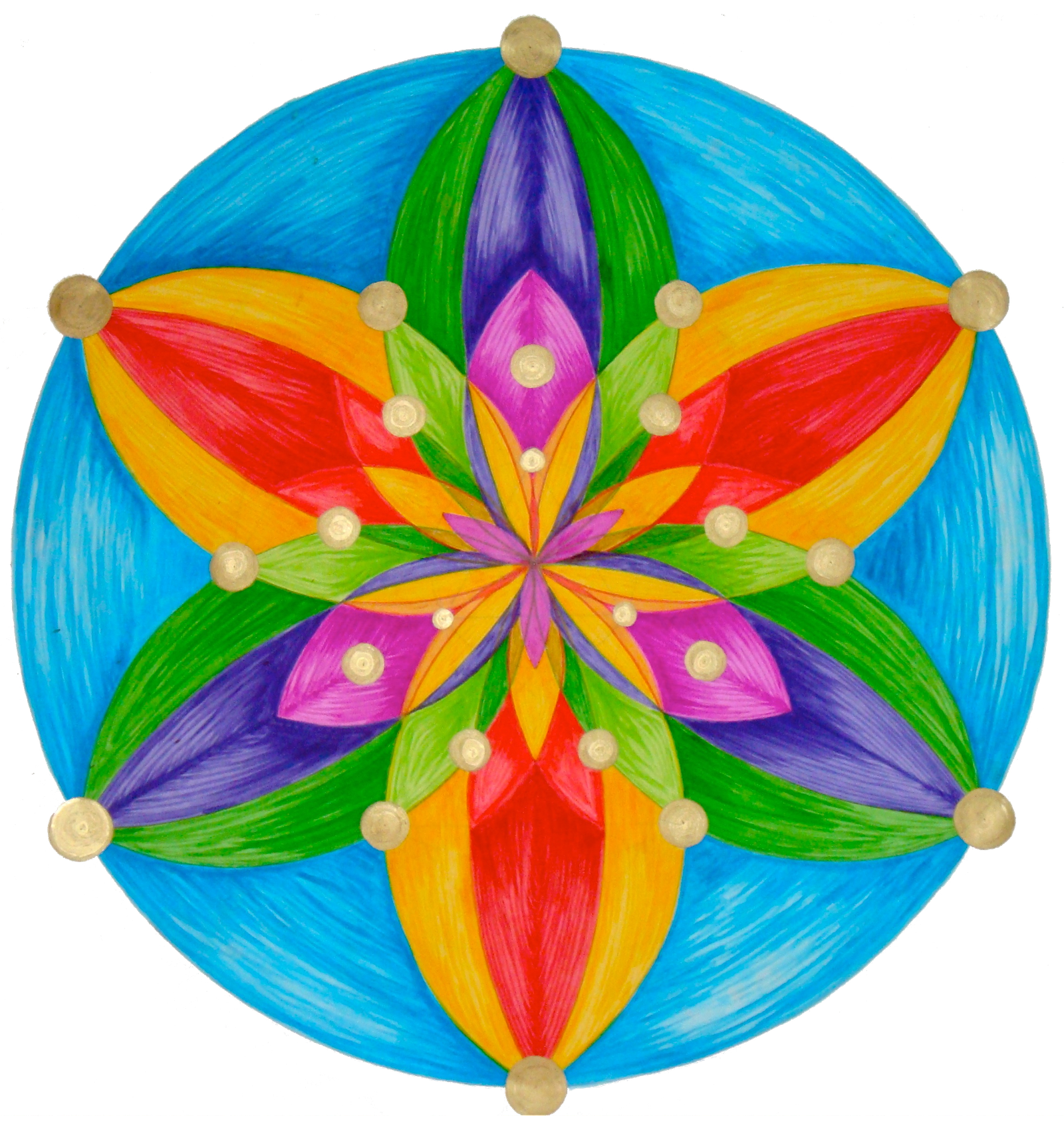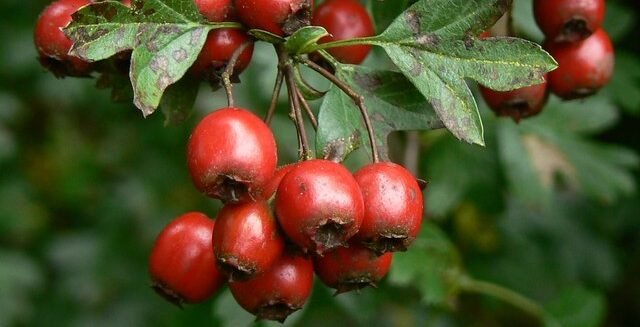What if the remedy for our modern epidemic of heart disease and emotional overwhelm has been growing wild in our hedgerows all along?
In a world where cardiovascular disease claims more lives than any other condition, and anxiety disorders affect nearly 40 million Americans annually, we’ve somehow convinced ourselves that solutions must come from laboratories rather than landscapes. Yet here’s what I’ve observed through years of studying traditional plant medicine. The most profound healers often grow as “weeds” right outside our doors.
From a systems perspective, this isn’t coincidence. it’s co-evolution. For thousands of years, humans and plants have developed symbiotic relationships where our greatest health challenges are met by the botanical allies growing in our immediate environment. Hawthorn berries represent perhaps one of the most elegant examples of this ancient wisdom.
The Cardiovascular Crisis Hidden in Plain Sight
Consider this startling pattern: while modern medicine has made extraordinary advances in treating acute heart conditions, chronic cardiovascular disease continues to skyrocket. What I’ve observed is that our approach treats symptoms. However, it ignores the deeper systemic imbalances that create heart problems in the first place.
Traditional European herbalists recognized something our ancestors knew intuitively. The heart isn’t just a pump. It’s an energetic center that responds to stress, grief, and emotional overwhelm just as powerfully as it responds to cholesterol and blood pressure. This knowledge led them to treasure hawthorn (Crataegus species) as the ultimate heart ally. As it addresses both the physical and emotional dimensions of cardiovascular health.
The research backing hawthorn’s effectiveness is genuinely impressive. Studies show it can strengthen heart contractions, improve blood flow, regulate blood pressure, and provide significant relief from chest pain and shortness of breath. But here’s where it gets interesting: hawthorn doesn’t just treat the heart. It teaches the nervous system how to find calm in chaos.
Beyond Symptoms: How Hawthorn Addresses Root Causes
From a systems perspective, what makes hawthorn extraordinary isn’t just what it does. It’s how it works. Rather than forcing dramatic changes like pharmaceutical interventions, hawthorn acts as a “trophorestorative”. It literally nourishes tissues back to optimal function.
I experienced this firsthand. After months of increasing stress that created irregular heart rhythms, I began drinking hawthorn tea twice daily. Within a short time, my heart was stronger with a normal rhythm and I was calmer.
This dual action reveals hawthorn’s deeper intelligence. The same compounds that strengthen heart muscle: oligomeric proanthocyanidins, flavonoids, and triterpenoid acids; also cross the blood-brain barrier to calm an overactive nervous system. It’s as if the plant understands that heart health and emotional resilience are inseparable.
What I’ve observed is that hawthorn doesn’t just improve cardiovascular markers. It helps people process grief, release chronic stress patterns, and develop nervous system resilience. This makes perfect sense when you understand that the heart and brain are in constant communication through the vagus nerve,. Our primary pathway for emotional regulation.

The Art of Ethical Harvesting: A Practice in Reciprocity
Learning to harvest hawthorn safely transforms your relationship with both the plant and the landscape. From a systems perspective, ethical foraging is actually an act of ecosystem stewardship. When done correctly, it strengthens plant communities rather than depleting them.
Identification is everything. Hawthorn trees and shrubs are distinguished by their deeply lobed leaves. Think of a rounded maple leaf, with clusters of white or pale pink flowers in spring, and most importantly, their formidable thorns. The berries, called “haws”, ripen from green to bright red throughout late summer and fall. Each contains 1-5 hard seeds surrounded by mealy flesh.
Here’s what experienced foragers know: the thorns aren’t obstacles, they’re protectors. These sharp defensive structures ensure only the most intentional harvesters can access the berries, creating a natural barrier that prevents over-collection. When you approach hawthorn with respect and patience, working carefully around the thorns becomes a meditative practice in itself.
The optimal harvest window typically falls between late September and early November, depending on your region. You’re looking for berries that are fully red but still slightly firm, soft enough to yield to gentle pressure, but not mushy or falling from the branches. This timing ensures maximum concentration of beneficial compounds while leaving plenty for wildlife that depend on haws for winter survival.
Golden rule of ethical harvesting: Never take more than one-third of what’s available, and always leave the most robust clusters for natural propagation. The birds that scatter hawthorn seeds are your partners in ensuring future harvests.
Preservation Methods That Honor Plant Intelligence
What I’ve discovered is that how you preserve hawthorn dramatically affects its therapeutic potency. From a systems perspective, each preservation method captures different aspects of the plant’s healing intelligence.
Drying concentrates and stabilizes the water-soluble compounds that make hawthorn tea so effective for daily heart support. The key is gentle heat – no higher than 95°F if using a dehydrator. Or, simple air-drying on screens in a well-ventilated area. Properly dried haws will keep their deep red color and maintain potency for up to two years when stored in glass jars away from light.
Freezing preserves the fresh plant energy that many herbalists believe is lost in other preservation methods. Simply remove any stems and damaged berries, spread on trays to freeze individually, then transfer to freezer bags. Frozen haws work beautifully in jams, syrups, and long-simmered decoctions.
But here’s where traditional knowledge gets fascinating: tincturing captures the full spectrum of hawthorn’s therapeutic compounds, both water and alcohol-soluble. The standard folk method involves chopping fresh berries (including seeds) and covering with 100-proof vodka in a 1:5 ratio. After four to six weeks of daily shaking, you’ll have a potent preparation that maintains its effectiveness for decades.
Three Transformative Preparations for Daily Use
Hawthorn Heart Tea: The Daily Foundation
The simplest and perhaps most profound way to work with hawthorn is as a daily tea. Unlike caffeinated beverages that stress the cardiovascular system, hawthorn tea provides sustained energy while promoting calm alertness. This is what traditional Chinese medicine calls “shen” or peaceful spirit.
Basic preparation: Simmer 1 tablespoon of dried berries in 2 cups of water for 15-20 minutes. The resulting ruby-red brew has a mildly tart, apple-like flavor that many find surprisingly pleasant. Drink 1-2 cups daily, preferably between meals.
What I’ve observed is that people who commit to this simple practice for 6-8 weeks often report improvements that go far beyond cardiovascular health. They report better sleep, increased emotional stability, and what one individual described as “feeling like my nervous system finally has an off switch.”
Hawthorn Jelly: Medicine as Nourishment
Creating hawthorn jelly transforms the healing practice into something joyful and shareable. The natural pectin in hawthorn berries creates a beautiful, tart preserve that’s as much about community and connection as it is about medicine.
Method: Simmer 4 cups of fresh haws with just enough water to cover until soft (about 30 minutes). Strain through cheesecloth, pressing gently to extract juice. For every cup of juice, add 1/2 to 2/3 cup raw honey and 2 tablespoons lemon juice. Here’s the key difference: honey creates a softer set than refined sugar, so you’re looking for a consistency more like a thick syrup or soft spread rather than a firm gel. Heat gently just until honey dissolves – excessive heat destroys honey’s beneficial enzymes and compounds.
The deeper wisdom here: When you take time to make medicine into something beautiful and nourishing, you’re engaging in “therapeutic relationship building”; deepening your connection to the healing process itself.
Hawthorn-Apple Syrup: Family-Friendly Heart Medicine
This preparation brilliantly demonstrates how to make potent medicine appealing to children and adults who might resist more traditional herbal preparations. The apple provides natural sweetness and additional pectin while complementing hawthorn’s cardiovascular benefits.
Process: Combine equal parts fresh hawthorn berries and chopped apples (about 2 cups each) with 4 cups water. Simmer until fruit is very soft, then strain through fine mesh. Return liquid to pot, add 1 cup honey, and simmer until syrupy consistency. Take 1-2 tablespoons daily or use as a pancake topping, yogurt swirl, or immune-supporting treat during cold season.
From a systems perspective, this syrup represents something profound: medicine that strengthens family bonds while supporting individual health. This is exactly the kind of holistic healing our communities desperately require.

Safety Wisdom: When Plants and Pharmaceuticals Intersect
Here’s where traditional plant wisdom must interface with modern medical reality. Hawthorn is remarkably safe for most people, but its effectiveness means it can potentiate certain heart medications. Particularly digitalis preparations, beta-blockers, and nitrates.
This isn’t a contradiction to avoid, it’s information to respect. If you’re taking prescribed heart medications, hawthorn’s ability to enhance their effects could require dosage adjustments. The solution isn’t to avoid hawthorn, but to work with healthcare providers who understand both pharmaceutical and botanical medicine.
What I’ve observed is that practitioners trained in integrative approaches often find hawthorn allows for reduced pharmaceutical dosages. While maintaining or improving therapeutic outcomes. However, this requires careful monitoring and should never be attempted without professional guidance.
During pregnancy and breastfeeding, the general principle of caution applies. Not because hawthorn is dangerous, but because we don’t have comprehensive safety data for these vulnerable life stages. Traditional use suggests it’s likely safe, but consulting with experienced herbalists or integrative practitioners is always wise.
The Ecological Intelligence of Wild Medicine
From a systems perspective, learning to work with wild plants like hawthorn connects us to something our ancestors understood intuitively. Health is not an individual pursuit, but an ecological relationship. When you harvest hawthorn, you’re participating in cycles of reciprocity that have sustained both human and plant communities for millennia.
Consider this pattern I’ve noticed: people who begin working with wild medicines invariably develop deeper relationships with their local landscapes. They become more observant of seasonal changes, more invested in environmental protection, and more conscious of the interconnections between personal and planetary health.
This isn’t merely poetic. It’s practically revolutionary. In a culture that has largely severed the connection between human health and ecosystem health, plants like hawthorn serve as bridges back to ecological awareness. Every cup of hawthorn tea is a vote for a world where medicine grows from the ground up rather than being manufactured in isolation.
The Nervous System Revolution Hidden in Plain Sight
What excites me most about hawthorn isn’t just its cardiovascular benefits. It’s the plant’s profound effects on nervous system regulation. In our chronically stressed culture, we’ve created an epidemic of sympathetic nervous system dominance that underlies everything from heart disease to digestive issues to immune dysfunction.
Hawthorn doesn’t just calm anxiety – it teaches the nervous system how to find its natural rhythm. The same compounds that strengthen heart muscle also support what’s called “vagal tone”; the flexibility of our rest-and-digest response. This is why people working with hawthorn often report improvements in sleep, digestion, and emotional resilience alongside cardiovascular benefits.
From a systems perspective, this makes perfect evolutionary sense. Our ancestors faced acute stressors that required intense sympathetic activation followed by periods of restoration. Modern life provides constant low-grade stress with little opportunity for nervous system recovery. Hawthorn helps restore the natural ebb and flow of arousal and recovery that optimal health requires.

Your Journey into Plant Partnership Begins Now
As we stand at the intersection of ancient wisdom and modern health challenges, plants like hawthorn offer us something pharmaceutical medicine cannot. The opportunity to participate in our own healing rather than simply consuming it.
Learning to work with hawthorn transforms you from a patient into a partner. Someone who understands that true health emerges from relationship, reciprocity, and respect for the intelligence inherent in living systems. This shift in perspective may be the most important medicine of all.
Here’s your invitation to begin: Start by simply noticing hawthorn trees in your area. Learn to recognize their distinctive thorns, lobed leaves, and clusters of berries. Watch how they change through the seasons. Notice where they grow and what other plants they associate with.
This observation practice alone will begin to shift something fundamental in how you relate to health and healing. You’ll start to see patterns, connections, and possibilities that weren’t visible before. You’ll develop “plant literacy”, the ability to read the landscape for medicinal allies.
When you’re ready to harvest, remember that you’re entering into relationship with a living being that has supported human health for thousands of years. Approach with gratitude, harvest with respect, and prepare your medicine with intention.
But don’t stop with hawthorn. Use this plant as your gateway into a larger understanding of how wild medicines can support not just individual health, but the health of our communities and ecosystems. In a world facing unprecedented challenges, we require solutions that heal at multiple levels simultaneously.
The path forward is growing wild all around us—we just need to remember how to see it.
Ready to deepen your plant medicine practice? Join my skool community where you’ll learn more NaturWise Living alongside a community of like-minded learners.
If you’ve found this post helpful and want to help keep this blog running, consider supporting with a small donation. Every bit helps!




The Hidden Truth About Where Your Food Really Comes From Will Shock You